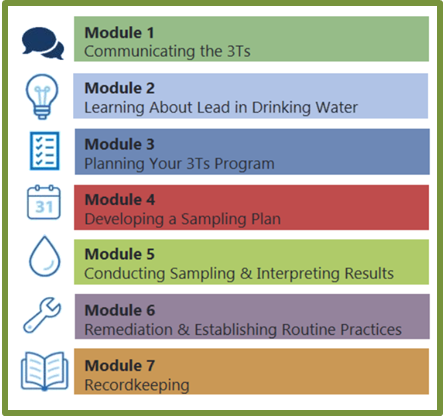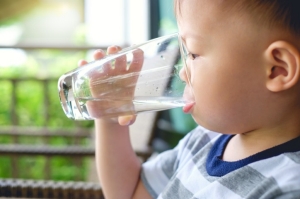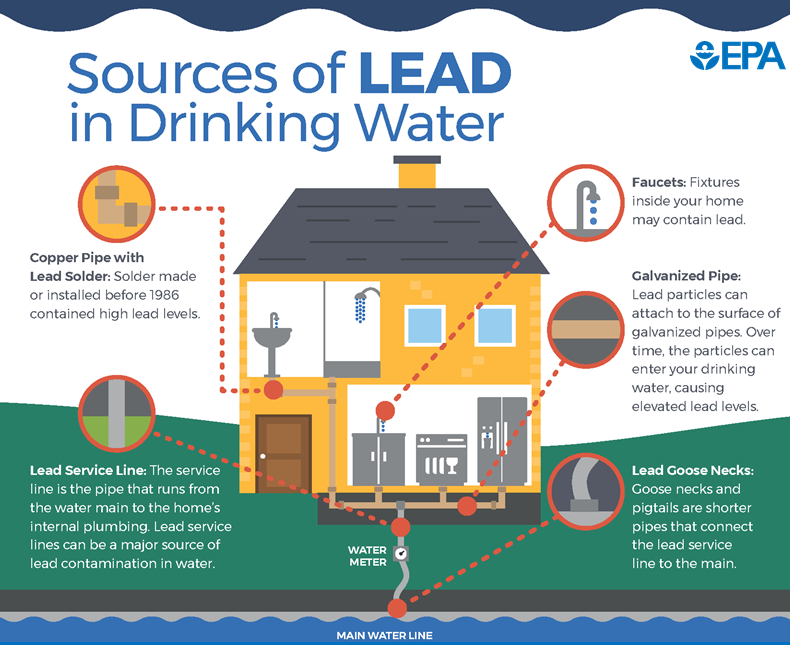Choose Safe Places: Drinking Water
Why is clean drinking water important to children’s health?
Drinking enough water every day is good for overall health. As plain drinking water has zero calories, it can help with managing body weight and reducing caloric intake when substituted for drinks with calories, like sugar-sweetened beverages. Child Care facilities are in a unique position to promote lifelong healthy dietary behaviors. The Institute of Medicine and the Centers for Disease Control and Prevention recommend that plain drinking water be available throughout the day. Providing access to drinking water helps to increase children’s overall water consumption, maintain hydration, and reduce energy intake if substituted for sugar-sweetened beverages.
EPA sets standards that ensure safe drinking water from public water sources. The Tennessee Department of Environment and Conservation’s Division of Water Resources oversees drinking water safety. It trains and inspects the operators who clean drinking water for water utilities. Water utilities are required to inspect water for infectious pathogens, chemical contaminants and disinfectant bi-products on a regular basis. By law, you are to be notified if your public drinking water source fails safety testing. For information on how to test your water, contact an approved laboratory
Private well drinking water
In rural areas, most people drink water from a private source such as a well or spring. If you get your water from a well or spring, make sure it is safe to drink. Have your water tested for bacteria, viruses and pollutants. If you use a private water source, making sure it is safe to drink is the responsibility of the well owner.
The Centers for Disease Control and Prevention has new guidance on Groundwater Corrosivity and Lead in Private Wells.
For more information, see our Private Water Supply webpage.
Lead in drinking water
Lead in drinking water is a real concern. Young children and infants are more vulnerable to lead because the physical and behavioral effects of lead occur at lower exposure levels in children than in adults.
Lead can enter drinking water when pipes that contain lead corrode. When water has high acidity or low mineral content, it can increase corrosion of pipes and fixtures. The most common problem is with brass or chrome plated brass faucets and fixtures with lead solder, from which significant amounts of lead can enter into the water, especially hot water.
Buildings built before 1986 are more likely to have lead pipes, fixtures and solder.
The more time water has been sitting in your building's pipes, the more lead it may contain. Anytime the water in a particular faucet has not been used for six hours or longer, "flush" water pipes by running the water until it becomes as cold as it will get. This could take as little as five to thirty seconds or up to two minutes or longer depending on whether any water has been run in the building. Your water utility can inform you if longer flushing times are needed to respond to local conditions. A licensed plumber can help to determine if the pipes in your building contain lead.
Only use cold water for eating and drinking: Use only water from the cold water tap for drinking, cooking, and especially for making baby formula. Hot water is likely to contain higher levels of lead. Note that boiling water will NOT get rid of lead contamination.
Other things you can do to reduce lead in drinking water include testing water samples from each fixture in the building and avoiding outdoor hoses for drinking water.
Testing water for lead
Testing of lead in drinking water helps evaluate plumbing systems and materials so that targeted remediation efforts can be taken.
It is a key step in understanding the problem, if there is one, designing an appropriate response, and reducing children’s exposure to lead.
What are the sources of lead in child care drinking water?
Lead can enter your drinking water as it travels through lead connecting service lines and your internal plumbing and fixtures, especially those that were installed prior to 1988 (the effective date of the “lead free” act).
Faucets that provide water used for consumption including drinking, cooking lunch, and preparing juice and infant formula may contain lead.
Lead is less likely to be in larger service lines typically used in larger buildings; however, many child care facilities reside in small buildings and are at a higher likelihood of being served by lead lines.
What are EPA's 3Ts for Reducing Lead in Drinking Water?
In October 2018, EPA released a revised version of its guidance manual and toolkit with recommendations on how to address lead in drinking water in child care facilities; these recommendations are not requirements. These recommendations are intended to serve as a resource to help child care facilities implement a voluntary program for reducing lead in drinking water. The approach is focused on three key steps:
TRAINING child care officials to raise awareness of the 3Ts program and summarize the potential causes and health effects of lead in drinking water.
TESTING drinking water in child care facilities to identify potential lead problems.
TAKING ACTION to reduce lead in drinking water.
The manual provides guidance on developing a communications plan, learning about lead in drinking water, a checklist for developing a 3Ts program, developing a sampling plan, and much more.
In the toolkit you will find new brochures that summarize program highlights and the 3Ts. There are factsheets about the 3Ts for Child Care Facilities and Public Water Utilities. For more information on reducing lead in drinking water and to download a copy of the guidance manual and toolkit, visit the EPA webpage.



Additional resources
Tennessee Department of Environment and Conservation
Drinking Water Program
www.tn.gov/environment/topic/wr-wq-water-quality
Centers for Disease Control and Prevention
Healthy Water
www.cdc.gov/healthywater/
Water Access
www.cdc.gov/healthyschools/npao/wateraccess.htm
Childhood Lead Poisoning Prevention Program
www.cdc.gov/nceh/lead/about/program.htm
Environmental Protection Agency
Lead in Drinking Water in Schools and Childcare Facilities
www.epa.gov/dwreginfo/lead-drinking-water-schools-and-childcare-facilities
Drinking Water Activities for Students and Teachers
www.epa.gov/ground-water-and-drinking-water/drinking-water-activities-students-and-teachers
National Center for Healthy Housing
Protecting Children from Lead Exposures in Home-Based Child Care
nchh.org/tools-and-data/technical-assistance/protecting-children-from-lead-exposures-in-child-care/




